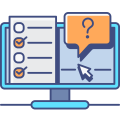Web Design for
Startups
Businesses
Generate Leads Online With Us
Book a consultation today and take the first step towards building a website that tells your brand’s story, builds trust, and converts visitors into customers.




Ecommerce Website
Shopify-
On-page SEO
-
Liquid Development
-
Custom Theme Design
-
Custom App Development
-
Conversion Tracking Setup
-
Dropshipping Options
-
Sales Focused Design
-
Product Data-Entry
Lead-Gen Website
Wordpress-
On-going 24/7 support
-
On-page SEO
-
Ready for Google Ads
-
Landing Page Building
-
In-house Professional Graphic Designer
-
Content Consultation
-
CRO Consulting
-
Digital Marketing Consulting
-
PHP Development
-
Professional Web Designer
Website Redesign
Your Platform of Choice-
Customised Based On Your Needs
-
Good For Small Bsuinesses
-
Professional Web Developers
-
Professional UI/UX Consulting
-
Professional CRO & SEO Consulting

Timeless with an edgy UX
Combining the two creates a website that is both functional and engaging, striking a balance between simplicity and creativity. Our websites are designed to maintain their sophistication and charm.

SEO-optimized
Our websites are SEO-ready with Search Console and GA4 connected for traffic tracking, optimized ALT tags and meta descriptions, and high scores on GT Metrics and PageSpeed Insights.

Fast and responsive
Users expect pages to load quickly, and search engines favor fast-loading sites. Responsive design ensures that the website works well on different screen sizes. Our builds are fast and responsive.


Websites Platforms
- Clients' preferences
- Market relevance
- Target market
- Customer personas



Portfolio


Expertise
E-Commerce
Lead Generation
Target Market
Website Longevity
Website's Functions
Online Advertising


Transparent
Development Process
1.
Briefing & Site Map
2.
Content Drafting
We appreciate clients have different preferences when it comes to content creation. Some know exactly what they want and prefer to draft it themselves, while others prefer us to handle the drafting process entirely. Some clients opt for a hybrid approach, where we advise and guide content drafting. We’re flexible and work with whichever option.
3.
Designing
4.
Developing

FAQs
Choosing the right website platform depends on your needs and goals. Consider factors such as ease of use, customization options, scalability, security, and cost. Popular platforms include WordPress, Wix, Shopify, and Squarespace.
UX stands for User Experience, which refers to the overall experience a user has while interacting with a website, application, or product. It encompasses all aspects of the user’s interaction, including usability, accessibility, visual design, and user satisfaction. The goal of UX design is to create a positive and seamless experience for the user, ultimately leading to increased engagement, leads and sales.
- Domain name – This is the address of your website, such as www.example.com.
- Web hosting – This is where your website files will be stored and accessed by visitors.
WordPress and Shopify are two different platforms used for different purposes.
The key difference between WordPress vs Shopify is that WordPress is a content management system (CMS) whereas Shopify is an e-commerce website builder.
WordPress is an open-source platform that is made for service providers, but it also has e-commerce capabilities through plugins like WooCommerce. On the other hand, Shopify is a hosted e-commerce platform made for business owners who need e-commerce features built-in.
Shopify is a precisely designed platform for eCommerce businesses and online stores, whereas WordPress serves a versatile interest. Therefore, Shopify has a slight leading edge in the eCommerce arena over WordPress.
- Purpose: Determine the purpose of your website and what you want to achieve with it.
- Target audience: Understand your target audience and cater to their needs and preferences.
- Content: Develop high-quality, relevant, and engaging content that aligns with your purpose and target audience.
- Design: Create an aesthetically pleasing and user-friendly design that provides a great user experience.
- Navigation: Ensure that your website is easy to navigate and that users can find what they are looking for quickly.
- Mobile responsiveness: Optimize your website for mobile devices to reach a wider audience.
- Speed: Ensure that your website loads quickly and smoothly to prevent users from leaving due to slow loading times.
- Search engine optimization (SEO): Optimize your website for search engines to increase visibility and traffic.
- Security: Implement security measures to protect your website from hackers and malware.
Analytics: Set up website analytics to track visitor behavior and measure your website’s performance.
Considering these factors during the website development process can help you create a successful website that achieves your goals and meets the needs of your target audience.

